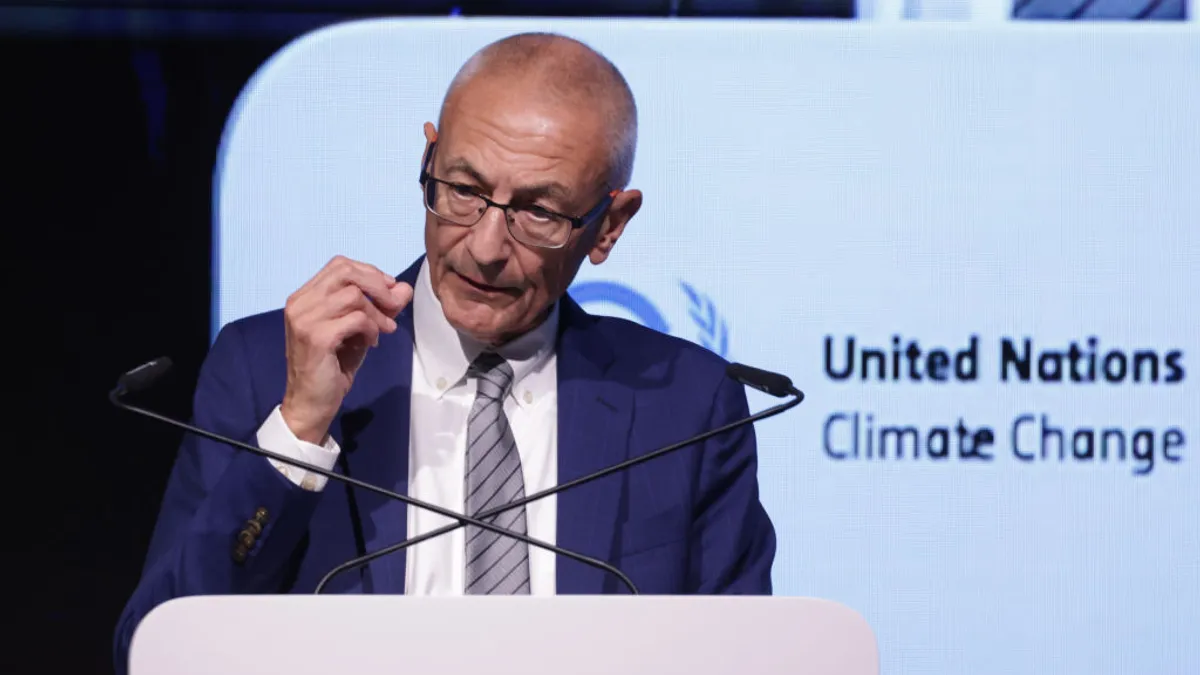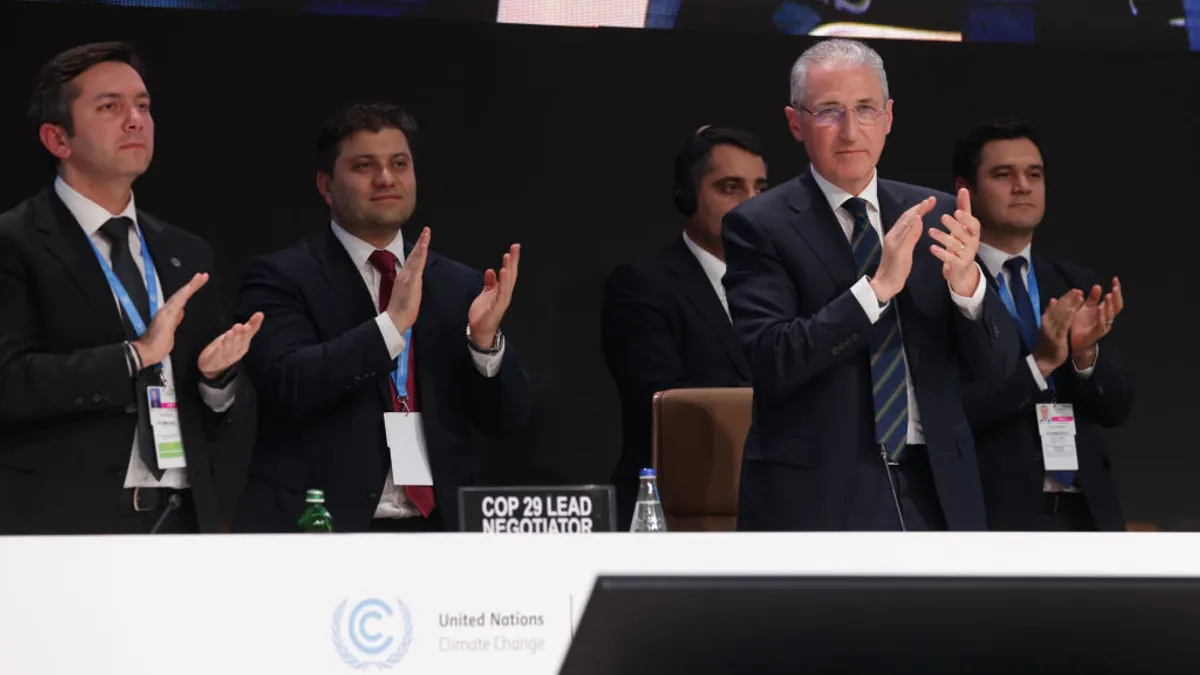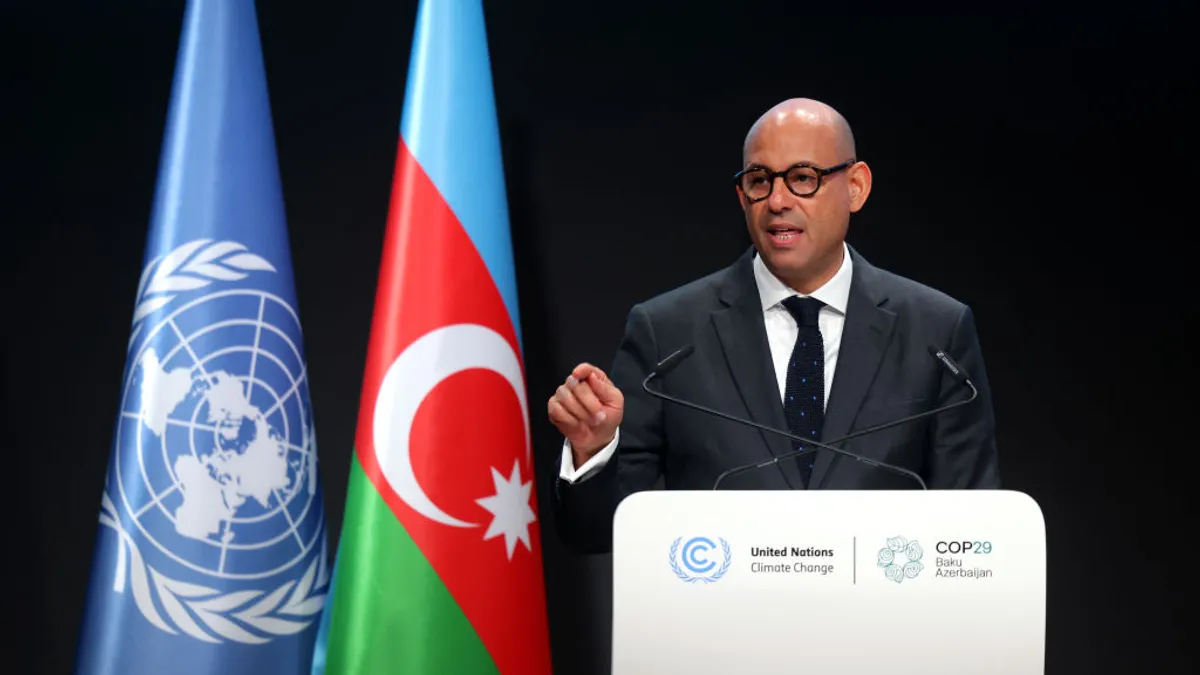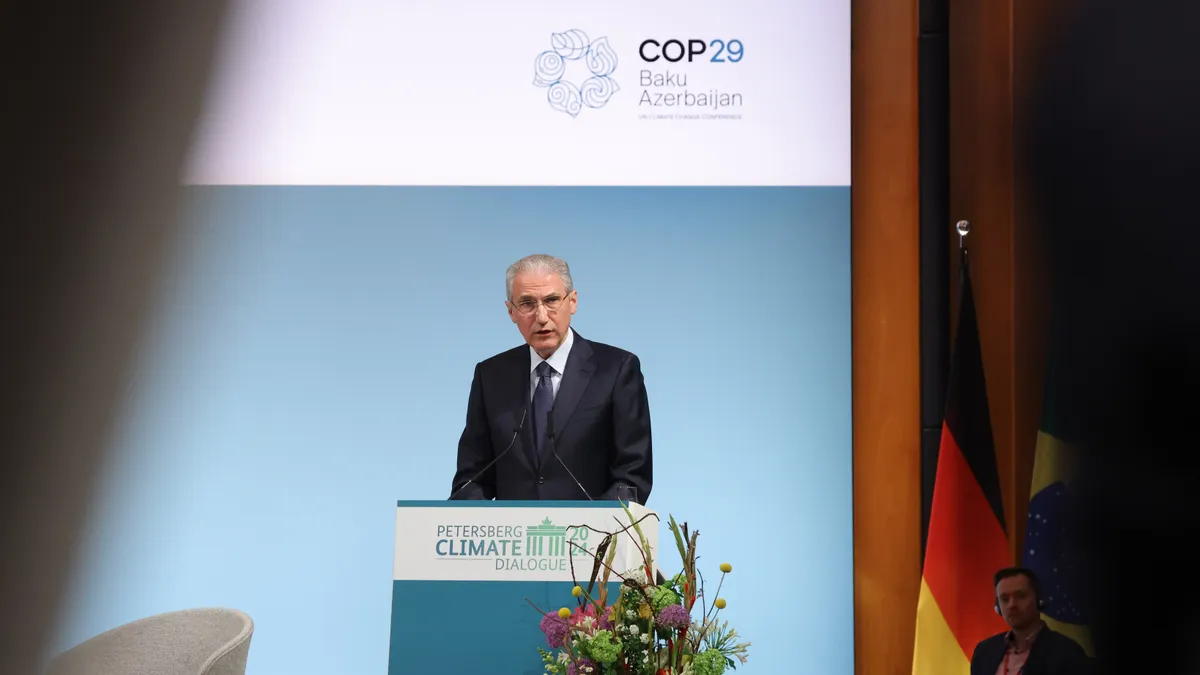Dive Brief:
- The United States government is on track to reduce its scope 3 emissions by 30% by 2030, a delegation representing the country said at the COP29 climate conference in Baku, Azerbaijan last week. The target amounts to a reduction of 40 million metric tons of carbon dioxide annually, according to a White House fact sheet.
- The update was disclosed alongside data on the federal government’s scope 3 footprint across the supply chain, fuel and energy-related emissions, transportation and more. The Biden-Harris administration said the report provided the “first comprehensive measurement” of such emissions, according to the Nov. 21 press release.
- The U.S. delegation at COP29 — led by President Joe Biden’s Senior Advisor for International Climate Policy John Podesta — also said the country launched an alliance which aims to slash scope 3 or indirect emissions generated by global governments. The “Government Scope 3 Alliance” currently counts the U.S. federal government and Canada, as well as the states of California, Colorado, Massachusetts, and Washington as members.
Dive Insight:
Scope 3 emissions account for approximately two-thirds of total emissions from the federal government — which includes the office of the president, Congress and federal courts — according to an estimate from the Biden-Harris administration. Data unveiled last week showed that the U.S. government’s supply chain emissions alone amounted to 120,900,831 metric tons of carbon dioxide equivalent in 2023, making up over 89% of total government scope 3 emissions last year.
A federal government’s supply chain includes all activities and processes associated with procuring, storing and distributing goods and services to government agencies and legislative and judicial branches, according to the IBM Center for The Business of Government. These can include the distribution and transportation of raw materials, goods, services, funds and more needed for government operations.
Last week’s scope 3 figures were supplemented by a supplier climate scorecard that detailed which of the top 200 federal suppliers disclosed their respective greenhouse gas emissions, set science-based climate targets, evaluated climate-related risks and established a climate transition plan. Suppliers mentioned include Boeing, Honeywell, Dell Technologies, IBM, Booz Allen Hamilton and UnitedHealth Group.
Of the 200 federal suppliers mentioned on the scorecard, 40 — or 20% — have taken action across all four sustainability metrics. The government’s biggest supplier Lockheed Martin — a global security, defense and aerospace contractor — accounted for over $71.6 billion in federal spending in 2023 and disclosed information on all categories except science-based targets, according to the scorecard.
The U.S. COP29 delegation included officials from more than 20 departments, agencies and organizations, such as the energy secretary, secretary of agriculture and the chair of the White House Council on Environmental Quality. However, it notably lacked the attendance of Biden, despite the U.S. being one of the top climate polluting countries.
The United Nations’ annual climate summit commenced days after former President Donald Trump was elected to a second term in the White House — an outcome that experts fear could have a major impact on future U.S. actions of climate and ESG.
A second Trump administration could lead to an additional 4 billion tonnes of carbon dioxide emissions by 2030 and cause global climate damages worth over $900 billion, according to an analysis from Carbon Brief earlier this year. The report also concluded that the U.S. would “very likely” miss its Paris Agreement-aligned decarbonization targets by a “wide margin” under a second Trump term. The U.S. currently has a goal of reducing emissions by 50% to 52% by 2030, but the Carbon Brief estimate said the nation’s emissions would be expected to only fall 28% below 2005 levels by the end of the decade.



















